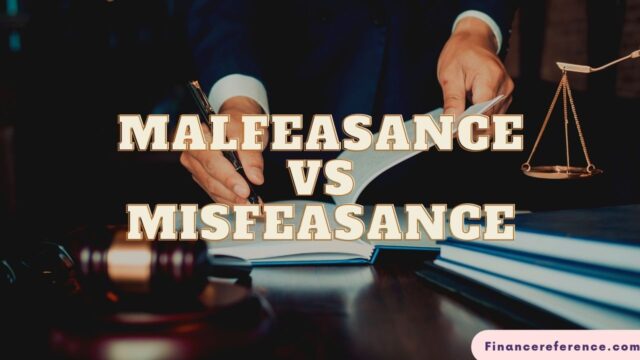
In every workplace, whether big or small, there are rules and regulations that are put in place to ensure that everyone operates within the boundaries of what is legally and morally acceptable.
However, no matter how well-structured the processes are, it is inevitable that mistakes will happen, and some employees will act outside of their professional code of conduct. When this happens, it is crucial to understand the difference between malfeasance and misfeasance. Both are serious ethical violations, but they differ in their nature and severity.
Definitions of Malfeasance and Misfeasance
Malfeasance is defined as the deliberate and intentional commission of an illegal or wrongful act, especially by a public official, employee, or corporate executive. It involves knowing that what one is doing is wrong but choosing to do it anyway.
On the other hand, misfeasance refers to the improper performance of a lawful duty or action. It is usually a negligent or accidental act that resulted in harm to the organization or its people.
Examples of Malfeasance
Examples of malfeasance include embezzlement, bribery, corruption, theft, fraud, and other forms of financial or ethical misconducts. Malfeasance could also involve abuse of power, misusing company resources for personal gain or benefit, and causing harm to others through illegal or unethical means.
Examples of Misfeasance
Misfeasance, on the other hand, could include errors in judgment, incompetence, failure to exercise due care, and other careless mistakes that could cause harm to the company or individuals associated with it. For instance, a plant manager who fails to take proper safety precautions, leading to an accident that injures a worker, could be charged with misfeasance.
The Consequences of Malfeasance and Misfeasance
The consequences of malfeasance and misfeasance vary depending on the severity of the violation and the organization’s policies. In most cases, malfeasance is viewed as a more serious offense and could result in termination and even criminal prosecution. Misfeasance, on the other hand, could lead to disciplinary action such as reprimands, warnings, or suspension.
Preventing Malfeasance and Misfeasance
To discourage malfeasance and misfeasance, organizations should have robust compliance programs in place. These programs should include policies that define expectations and limitations of employee conduct, regular training on ethical behavior, and clear reporting channels for any suspicions of wrongdoing. Organizations should also take steps to establish a culture of ethics and integrity, where employees are encouraged to speak out about any violations without fear of retaliation.
Conclusion:
In summary, every organization must draw a line between what is right or wrong for their employees to operate within and ensure they follow the code of conduct. Misfeasance and malfeasance are ethical violations that differ in their nature and severity. By understanding their differences and taking appropriate steps to prevent them, organizations can maintain a culture of integrity and avoid legal and reputational damage.


































